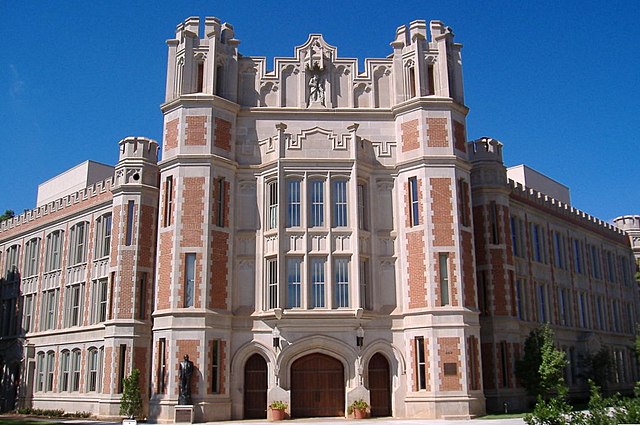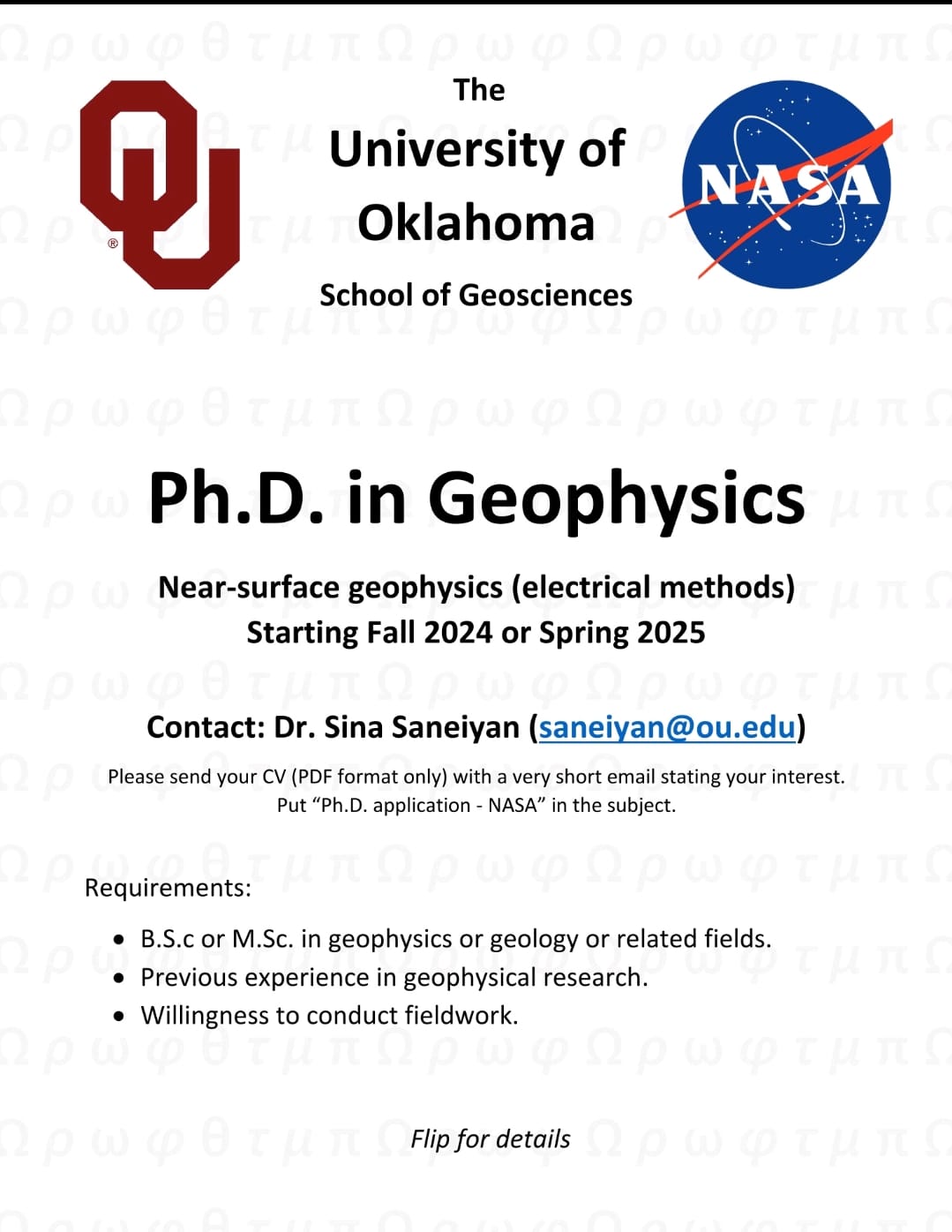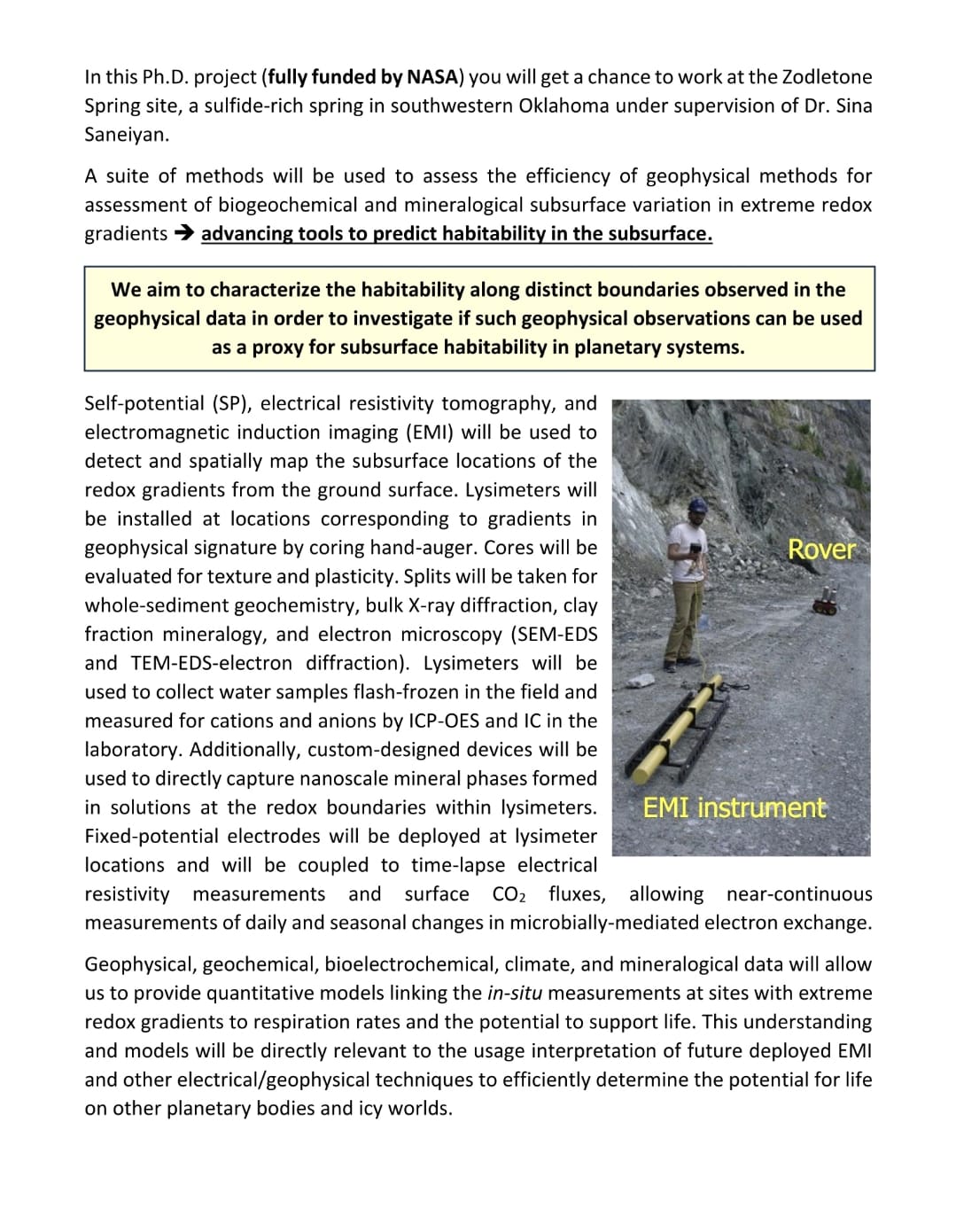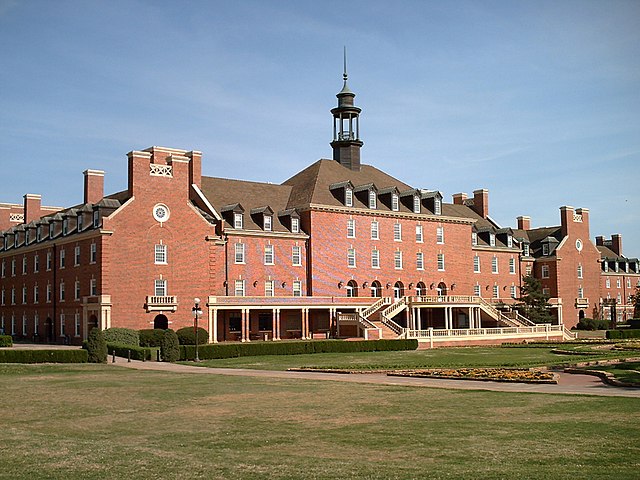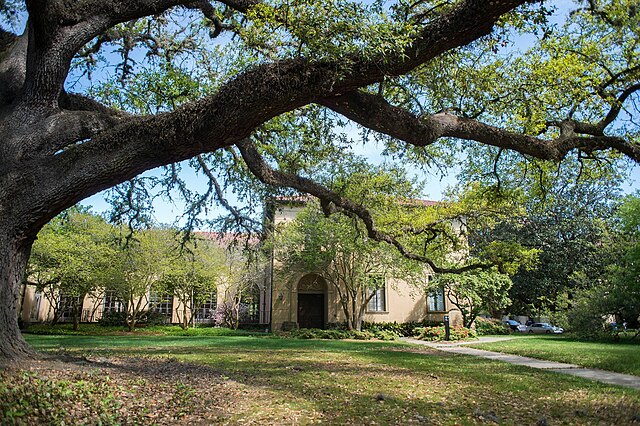Ph.D. in Geophysics in Near-surface geophysics (electrical methods)
Starting Fall 2024 or Spring 2025
Contact: Dr. Sina Saneiyan (saneiyan@ou.edu)
Please send your CV (PDF format only) with a very short email stating your interest. Put “Ph.D. application – NASA” in the subject.
Requirements:
- B.S.c or M.Sc. in geophysics or geology or related fields.
- Previous experience in geophysical research.
- Willingness to conduct fieldwork.
In this Ph.D. project (fully funded by NASA) you will get a chance to work at the Zodletone Spring site, a sulfide-rich spring in southwestern Oklahoma under supervision of Dr. Sina Saneiyan.
A suite of methods will be used to assess the efficiency of geophysical methods for assessment of biogeochemical and mineralogical subsurface variation in extreme redox gradients advancing tools to predict habitability in the subsurface.
We aim to characterize the habitability along distinct boundaries observed in the geophysical data in order to investigate if such geophysical observations can be used as a proxy for subsurface habitability in planetary systems.
Self-potential (SP), electrical resistivity tomography, and electromagnetic induction imaging (EMI) will be used to detect and spatially map the subsurface locations of the redox gradients from the ground surface. Lysimeters will be installed at locations corresponding to gradients in geophysical signature by coring hand-auger. Cores will be evaluated for texture and plasticity. Splits will be taken for whole-sediment geochemistry, bulk X-ray diffraction, clay fraction mineralogy, and electron microscopy (SEM-EDS and TEM-EDS-electron diffraction). Lysimeters will be used to collect water samples flash-frozen in the field and measured for cations and anions by ICP-OES and IC in the laboratory. Additionally, custom-designed devices will be used to directly capture nanoscale mineral phases formed in solutions at the redox boundaries within lysimeters. Fixed-potential electrodes will be deployed at lysimeter locations and will be coupled to time-lapse electrical resistivity measurements and surface CO2 fluxes, allowing near-continuous measurements of daily and seasonal changes in microbially-mediated electron exchange. Geophysical, geochemical, bioelectrochemical, climate, and mineralogical data will allow us to provide quantitative models linking the in-situ measurements at sites with extreme redox gradients to respiration rates and the potential to support life. This understanding and models will be directly relevant to the usage interpretation of future deployed EMI and other electrical/geophysical techniques to efficiently determine the potential for life on other planetary bodies and icy worlds.

